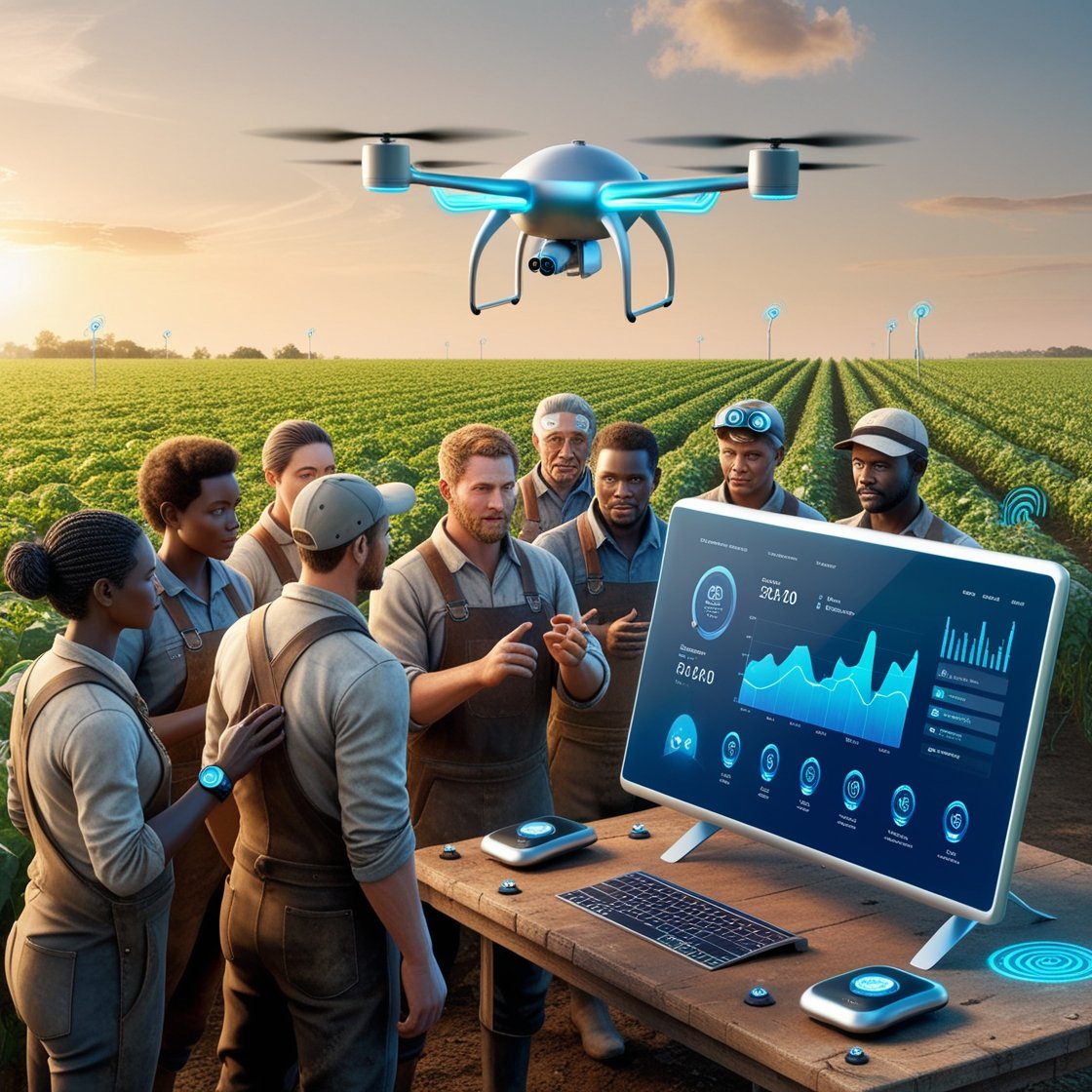Introduction
In recent years, the convergence of technology and agriculture has led to groundbreaking innovations that promise to reshape the farming landscape. Among these, the Internet of Things (IoT) stands out as a game-changer. By integrating IoT into agricultural practices, farmers can optimize crop yields, enhance sustainability, and ensure more efficient use of resources. This article delves into how IoT is transforming smart agriculture, exploring its benefits, applications, and future potential.
1. Understanding IoT in Agriculture
1.1 What is IoT?
The Internet of Things (IoT) refers to the network of interconnected devices that communicate and exchange data through the internet. In agriculture, this means using sensors, devices, and software to monitor and manage farming activities remotely.
1.2 The Role of IoT in Farming
IoT technologies help farmers collect real-time data on various aspects of their crops and environment, leading to more informed decision-making and efficient farming practices.
2. Key Components of IoT in Agriculture
2.1 Sensors and Devices
Sensors are the backbone of IoT in agriculture. They monitor soil moisture, temperature, humidity, and crop health, providing essential data to optimize farming practices.
2.2 Data Analytics and Management
Data collected by sensors is analyzed using advanced algorithms to generate actionable insights. This data-driven approach helps in predicting crop needs and managing resources more effectively.
2.3 Connectivity and Communication
Reliable internet connectivity is crucial for IoT systems to function effectively. Technologies such as 5G and satellite communication enhance the ability to transmit data from remote areas.
3. Enhancing Crop Yields with IoT
3.1 Precision Farming
IoT enables precision farming by providing detailed insights into crop conditions. Farmers can apply water, fertilizers, and pesticides with pinpoint accuracy, reducing waste and maximizing yield.
3.2 Automated Irrigation Systems
IoT-driven automated irrigation systems adjust watering schedules based on real-time soil moisture data, ensuring crops receive the optimal amount of water.
3.3 Crop Health Monitoring
Continuous monitoring of crop health through IoT devices helps in early detection of diseases and pests, allowing for timely interventions and minimizing crop loss.
4. Improving Sustainability through IoT
4.1 Efficient Resource Management
By optimizing the use of water, fertilizers, and pesticides, IoT helps in reducing the environmental footprint of farming operations. This leads to more sustainable agriculture practices.
4.2 Reducing Waste
IoT systems can identify and address inefficiencies in farming practices, such as over-application of resources, thereby reducing waste and promoting sustainability.
4.3 Supporting Soil Health
IoT helps in monitoring soil conditions and managing crop rotations, which contributes to maintaining and improving soil health over time.
5. Case Studies and Examples
5.1 Smart Irrigation in California
A notable example is the use of IoT-based smart irrigation systems in California’s vineyards, which have significantly improved water usage efficiency and crop yields.
5.2 Precision Agriculture in Iowa
Farmers in Iowa are utilizing IoT technologies for precision agriculture, resulting in higher crop productivity and reduced input costs.
6. Challenges and Considerations
6.1 Data Security and Privacy
As with any technology that relies on data, ensuring the security and privacy of agricultural data is a crucial concern for IoT systems.
6.2 Cost of Implementation
The initial investment in IoT technology can be high, which may be a barrier for small-scale farmers. However, the long-term benefits often outweigh the costs.
6.3 Connectivity Issues
In remote farming areas, reliable internet connectivity can be a challenge, potentially impacting the effectiveness of IoT solutions.
7. The Future of IoT in Agriculture
7.1 Advances in Technology
Ongoing advancements in sensor technology, data analytics, and connectivity are likely to enhance the capabilities of IoT in agriculture.
7.2 Integration with Other Technologies
The integration of IoT with technologies such as artificial intelligence (AI) and blockchain could further revolutionize smart agriculture.
7.3 Global Adoption
As IoT technologies become more affordable and accessible, their adoption is expected to increase globally, driving a new era of smart agriculture.
Conclusion
The integration of IoT into agriculture represents a significant leap forward in enhancing crop yields and promoting sustainability. By leveraging real-time data and advanced technologies, farmers can make more informed decisions, optimize resource use, and reduce environmental impact. As technology continues to evolve, the potential for IoT in agriculture will only grow, offering exciting opportunities for the future of farming.
FAQs
1. How does IoT improve crop yields?
IoT improves crop yields by providing real-time data on crop conditions, allowing for precise application of water, fertilizers, and pesticides, which enhances overall productivity.
2. What are some common IoT devices used in agriculture?
Common IoT devices in agriculture include soil moisture sensors, weather stations, automated irrigation systems, and crop health monitoring sensors.
3. How does IoT contribute to sustainability in farming?
IoT contributes to sustainability by optimizing the use of resources, reducing waste, and supporting soil health, which helps in minimizing the environmental impact of farming.
4. What are the challenges of implementing IoT in agriculture?
Challenges include data security and privacy concerns, high initial costs, and connectivity issues in remote areas.
5. What is the future outlook for IoT in agriculture?
The future outlook for IoT in agriculture is promising, with expected advancements in technology, integration with other technologies, and increased global adoption driving further innovation and efficiency.
